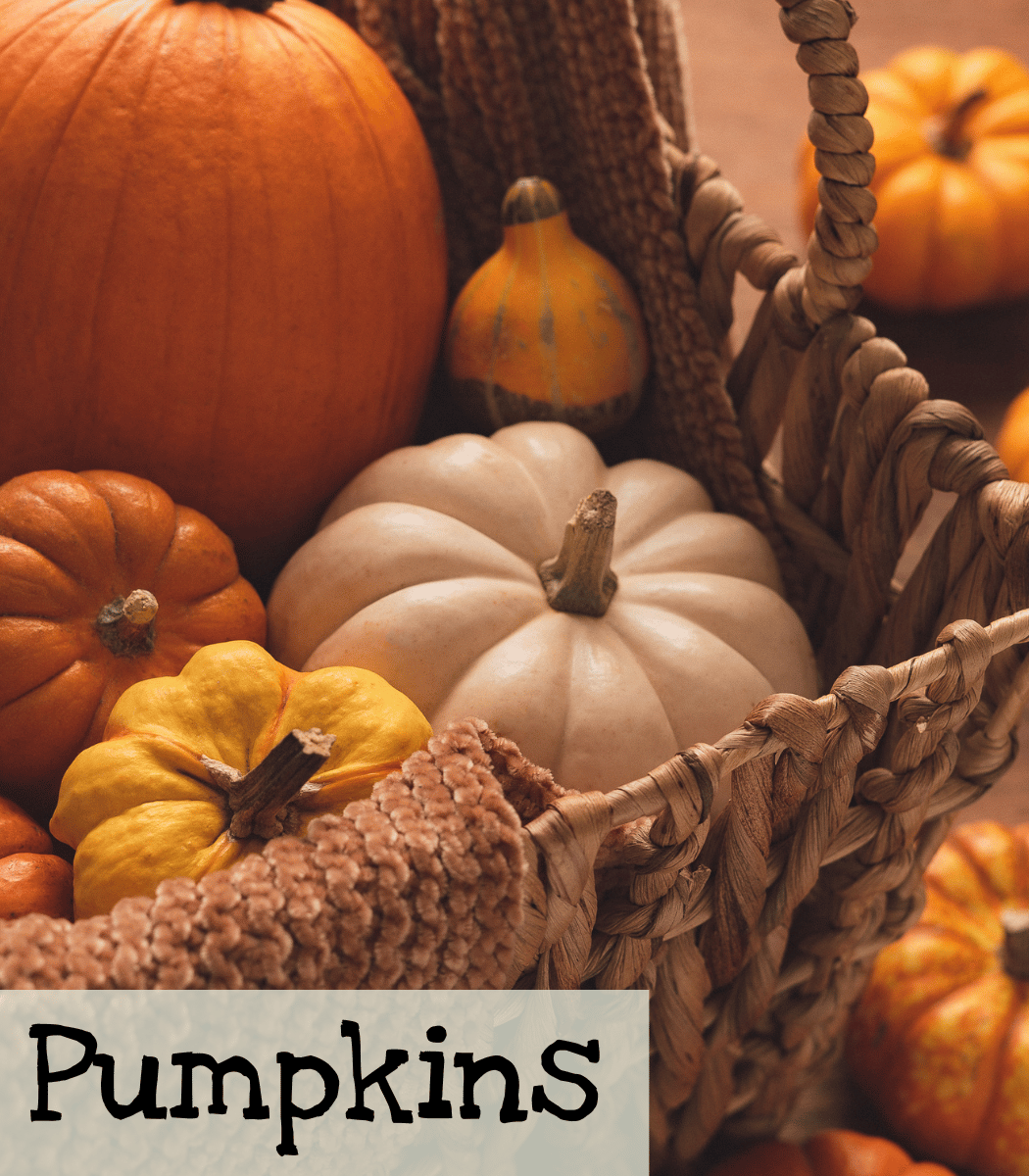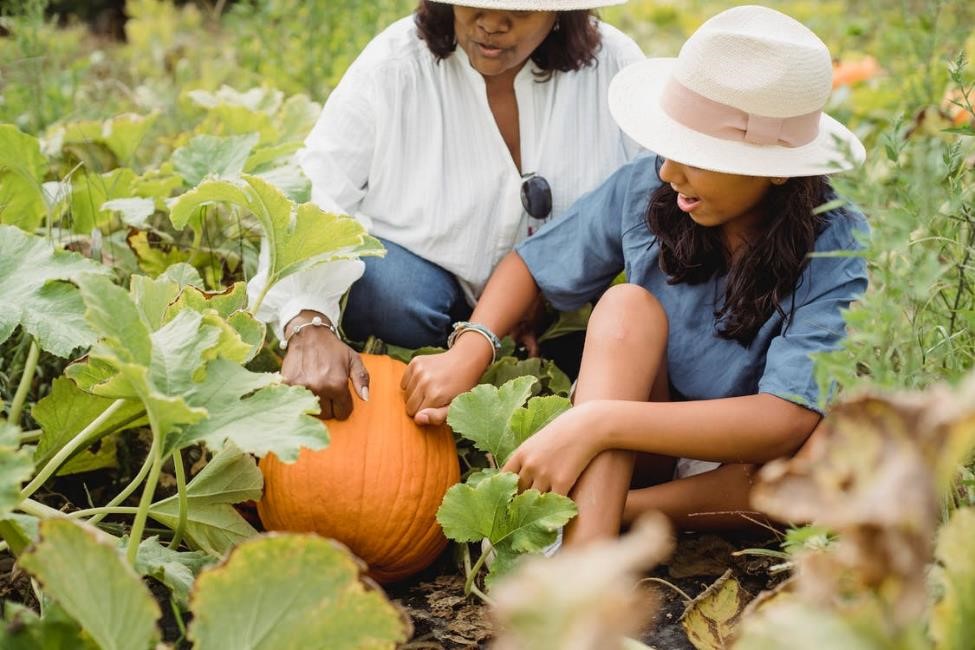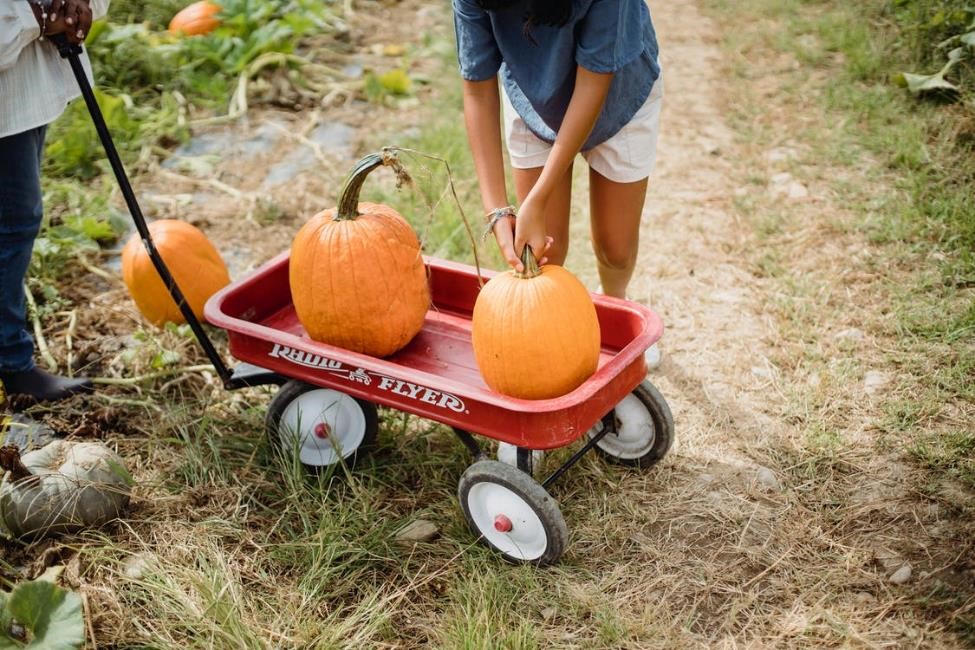
Pumpkin
A versatile winter squash, the pumpkin can be used in both sweet and savory dishes. It has a long growing season. It is planted as soon as soil temperatures are warm enough in spring but often not harvested until before frost in the fall.
|
Connecticut Field; Jack-O-Lantern; Kakai |
|
Cucurbita pepo: Early Sweet Sugar Pie & Kakai & Jack O’ Lantern |
|
Intermediate to Difficult |
|
Difficult |
|
5 years if properly stored |
|
Annual |
|
7-14 days |
|
None |
|
1 inch |
|
Around 20 square feet per plant |
|
Full Sun |
|
Moranga: 95 days Jack O’ Lantern: 100 days Kakai: 100 days |
|
Connecticut Field: 10-20 LB Jack O’ Lantern: 10-24 LB Kakai: 5-8 LB |
|
April and May |
|
Yes |

Growing Tips


When to Start
Spring: After the danger of frost has passed and soil has reached 65 F. About 2 weeks after the last frost date. (May 15-July 1 for GA. Just keep in mind how many days are needed before maturity.) You can also start seedlings indoors about 2-4 weeks before the last frost date. Great Pumpkin Contestants-Sow the seeds around May 1, this is necessary to meet the contest finish date.
How to Start
Pumpkins require full sun (at least 8 hours of direct sunlight), fertile soil, and sufficient moisture. They are heavy feeders. Use well-composted material and mix it into the soil before planting. Direct sow about 1 inch deep into a full sun bed once the soil has warmed up to 65 F. If starting indoors, start 2-4 weeks before the last frost. Don’t allow the seedlings to become rootbound in their pots as this will stunt the plant. Harden off and then transplant when the soil has reached 65 F.
Care
Summer and winter squash are commonly planted in hills. This isn’t necessary, but it does help with drainage. Usually, only 4 to 5 seeds per hill are plenty, thinning down to 2 or 3 plants per hill once the seedlings have developed their true leaves. Hills and rows should be spaced approximately 4 to 5 feet apart with 5 to 7 feet between rows and with the hills spaced about 3 feet apart. Give each plant about 20 cubic feet of space to grow. Great Pumpkin Contestants, even though you are give multiple seeds, once the plants germinate and have developed 2-3 true leaves, thin to one as your goal is to get large pumpkins. True leaves look like pumpkin leaves. Without thinning the plants they will be too close together and competition for nutrients will be fierce. Since you are trying to get the biggest pumpkin, you don’t want several plants competing for water and nutrients as this will stunt your plants, creating smaller pumpkins.
Side dress with more well-composted material or use a fertilizer that is designed for squashes as the season progresses. Use cardboard, mulch, or landscape fabric to reduce weeds and retain soil moisture.
Pumpkins love water! Give them at least 1-2 inches of water a week and water deeply. This is particularly important during the time the fruit is setting. Use mulch to help retain moisture and control weeds. Water bottle reservoirs are also helpful to keep the soil moist during hot, dry spells.
Pest Problems:
Consider covering the plants with mesh netting and hand pollinating. See my Zucchini Pest Prevention for details. Companion plants are also very useful in helping to control pests. Attracting beneficial predators that will eat the common pests that harm pumpkins (aphids, squash vine borers, cutworms, squash bugs) can be done by planting flowers. These flowers have the additional benefit of helping with pollination as they attract pollinators. There is a little more to companion planting than this, but it really is that simple.
My personal experience
I tried using radish to help deter squash bugs. It really did seem to help. I still had a few eggs I had to cut off the leaves, but I only had to do that 2x during the growing season. It didn’t seem to help with the squash vine borers, they still got some plants.
It is said that radishes produce a chemical that squash bugs do not like and will try to avoid. For this to work properly, the radish needs to be touching the squash to that the chemical will transfer to the the squash.
I have lots of flowers but no fruit
Sometimes this is caused by stress. It’s too hot, not enough moisture, or a soil nutrition issue. Check the soil moisture, and water accordingly. Provide shade if there is excessive heat for a prolonged time (like in the summer of 2022 when GA was in the 100s). And make sure the soil has enough nutrition by doing a soil check and fertilizing accordingly. (There are soil test kits at the Jefferson Public Library.)
Or it could be a pollination problem. Pumpkins have both male and female flowers. There are a couple of things you can try. Try planting some flowers in with the pumpkins to attract pollinators. Short marigolds are good and they will help with pests and not overshadow the pumpkins. A border of alyssum, which also helps with pests would be helpful, or numerous other companion plants. Also, try hand pollinating. It’s very easy to do and is done the same way as zucchini and other squashes. See Zucchini Pest Prevention for how to hand pollinate.
To Get Big Pumpkins
- Pinch off the fuzzy ends of each vine after a few pumpkins have formed. This will stop vine growth so that the plant’s energies are focused on the fruit.
- Pruning the vines will also help with space.
- Gardeners who are looking for a “prize for size” pumpkin might select two or three prime candidates and remove all other fruit and vines.
- Place a thin board or heavy cardboard under ripening pumpkins to help avoid decay and insect damage.

When to Harvest
- When you thump the pumpkin with a finger, the rind will feel hard and it will sound hollow.
- Harvest pumpkins and winter squashes on a dry day after the plants have died back and the skins are hard.
- To slow decay, leave an inch or two of stem on pumpkins and winter squash when harvesting them.
- To harvest the pumpkin, cut the fruit off the vine carefully with a sharp knife or pruners; do not tear. Be sure not to cut too close to the pumpkin; a liberal amount of stem (3 to 4 inches) will increase the pumpkin’s keeping time.
- Handle pumpkins very gently or they may bruise.

How to Cure and Store Pumpkins
- Pumpkins should be cured in the sun for about a week to toughen the skin and then stored in a cool, dry bedroom, cellar, or root cellar—anywhere around 55ºF–Just don’t forget about them!
Seed Saving

Isolation Distance
Pumpkins are either C. maxima, C. pepo, C. moschata, or C. mixta. Varieties within these species will cross each other, but C. maxima will not cross C. pepo. For example, any variety of maxima will cross with other maxima, but maxima will not cross with pepo, will not cross with mixta, etc. See Cross-Pollination for more details. Isolate the same species by 1-2 miles.
Instructions
Pumpkins produce wet seeds and should be allowed to ripen on the vine before harvesting since seeds do not continue ripening after they are harvested.
Pumpkins benefit from fermentation. Store the squash in a cool, dry area for an additional 3 weeks to cure it. Don’t chill it as this will damage the seeds.
Once the squash has cured, it’s time to remove the seeds. Cut open the squash and scoop the seeds out. Pour the “guts” into a large bowl and fill it with water. Healthy seed sinks to the bottom and dead (not viable) will float along with the majority of the pulp.
Remove the seeds that float and pulp. Pour the viable seeds into a colander and rinse off any clinging pulp and drain. Allow the seeds to dry on a towel in a sunny area for a week or so.
Features
- Connecticut Field: Heirloom. Great for pies and carving.
- Jack-O-Lantern: Heirloom. Perfect for carving.
- Kakai seeds are hulless and excellent for roasting. It is a more compact semi-bush variety, excellent for smaller gardens. Heirloom.

- Pumpkins love water! They are 80-90% water and need a lot of it to grow. According to edenbrothers.com, “The secret is to only water pumpkins when they need it. If the plant looks healthy, there is no need to water daily. When the soil is dry and the plant looks limp, give it a long deep drink. Deep but infrequent watering results in a healthier plant.”
- While it is not necessary to grow pumpkins on hills, it is beneficial. The hills are about the size of small pitcher mounds. With hills, the soil will warm more quickly and the seeds will germinate faster. It also helps with drainage and pest control. (Almanac.com)
- Pumpkins are what are called ‘heavy feeders.” This means they use up lots of nutrients so you have to replenish the nutrients in the soil. Use a water-soluble fertilizer that is designed for squashes. When it is water-soluble the nutrients are immediately available for the plant to take them up. A fertilizer designed for vegetables is better because it is designed to help the plant produce fruit rather than excessive foliage. Just remember too much of a good thing is a bad thing. Over-fertilizing the pumpkin will cause harm and make the plant unhealthy. Yellow leaves can be a sign of too much fertilizer. A good rule of thumb is to fertilize every 10 days. Just adjust depending on the nutrients in the soil and the health of the plant.
- For pest control, try planting companion flowers, or check out my zucchini pest prevention for more ideas. You can also experiment with flowers that MAY repel squash bugs.
You May Also Like:
Squash Pest Prevention: Practical advice with pictures
Companion Planting: How to use flowers to help control pests.
Plants that May Repel Squash Bugs
Trap cropping: How to keep pests out of your main crop.
